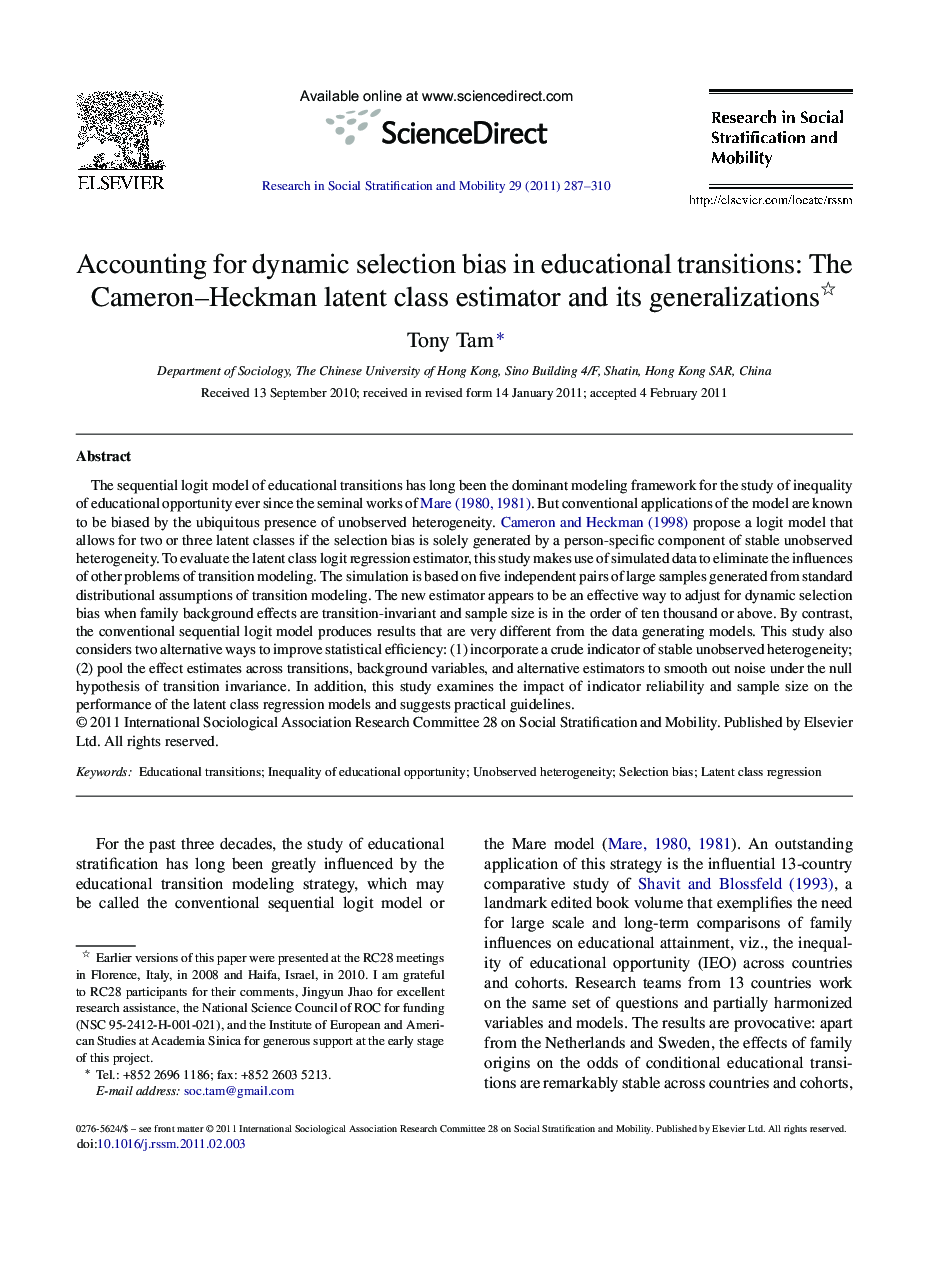| کد مقاله | کد نشریه | سال انتشار | مقاله انگلیسی | نسخه تمام متن |
|---|---|---|---|---|
| 999595 | 936849 | 2011 | 24 صفحه PDF | دانلود رایگان |

The sequential logit model of educational transitions has long been the dominant modeling framework for the study of inequality of educational opportunity ever since the seminal works of Mare, 1980 and Mare, 1981. But conventional applications of the model are known to be biased by the ubiquitous presence of unobserved heterogeneity. Cameron and Heckman (1998) propose a logit model that allows for two or three latent classes if the selection bias is solely generated by a person-specific component of stable unobserved heterogeneity. To evaluate the latent class logit regression estimator, this study makes use of simulated data to eliminate the influences of other problems of transition modeling. The simulation is based on five independent pairs of large samples generated from standard distributional assumptions of transition modeling. The new estimator appears to be an effective way to adjust for dynamic selection bias when family background effects are transition-invariant and sample size is in the order of ten thousand or above. By contrast, the conventional sequential logit model produces results that are very different from the data generating models. This study also considers two alternative ways to improve statistical efficiency: (1) incorporate a crude indicator of stable unobserved heterogeneity; (2) pool the effect estimates across transitions, background variables, and alternative estimators to smooth out noise under the null hypothesis of transition invariance. In addition, this study examines the impact of indicator reliability and sample size on the performance of the latent class regression models and suggests practical guidelines.
Journal: Research in Social Stratification and Mobility - Volume 29, Issue 3, September 2011, Pages 287–310